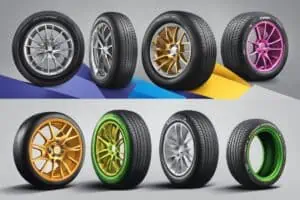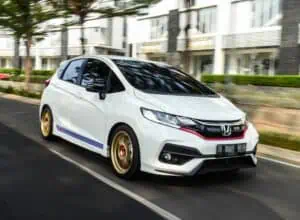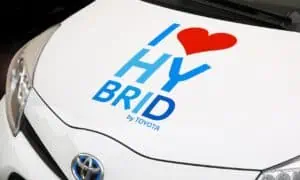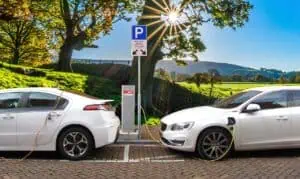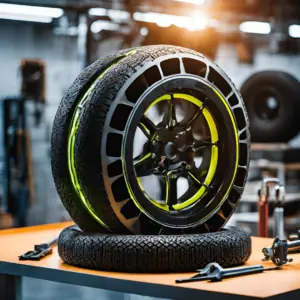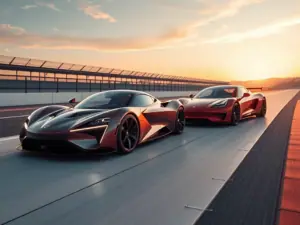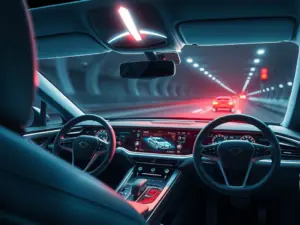Picture this: The sun’s beating down on the asphalt, the air thick with anticipation. In one lane, a sleek electric powerhouse hums quietly. In the other, a gas-guzzling beast roars to life. Welcome to the future of track day performance, where electric and gas vehicles go head-to-head in an epic battle for supremacy.
As seasoned track day enthusiasts, we’ve had the thrill of pushing both electric and gas vehicles to their limits. Today, we’re diving deep into the electrifying world of track day performance, comparing these two powerhouses across various aspects and track types. Buckle up, because this ride is about to get exciting!
Performance Face-Off: Electric vs Gas
Acceleration and Top Speed: The Sprint and the Marathon
When it comes to raw acceleration, electric vehicles are like lightning in a bottle. The instant torque delivery of electric motors gives them a significant edge off the line. We’ve felt the g-force push us back into our seats as electric vehicles rocket from 0-60 mph in breathtaking times.
However, gas vehicles still hold their own when it comes to top speeds. While electric cars can sprint, gas-powered machines excel in the long haul, often achieving higher top speeds on long straightaways.
Our take: Electric for the quick sprint, gas for the long haul.
Handling and Cornering: Dancing on the Edge
Here’s where things get interesting. The lower center of gravity in many electric vehicles, thanks to their battery placement, gives them excellent stability in corners. It’s like they’re glued to the track!
On the flip side, gas vehicles benefit from years of refined suspension tuning and weight distribution. The lighter weight of gas cars (compared to battery-laden EVs) can make them more nimble in tight corners.
We’ve noticed: Electric vehicles shine in sweeping corners, while gas cars can have an edge in quick direction changes.
Endurance and Heat Management: The Long Game
This is where gas vehicles traditionally shine. They can run lap after lap with minimal performance degradation, refuel quickly, and get back on track.
Electric vehicles, while improving, still face challenges with battery heat management during extended high-performance driving. However, we’ve seen remarkable progress in this area, with some EVs now capable of multiple hot laps before needing a cool-down period.
Our experience: Gas still leads in endurance, but electric is catching up fast.
Overall Lap Times: The Bottom Line
When it comes to overall lap times, it’s not a clear-cut victory for either side. On shorter tracks with more corners, electric vehicles can leverage their instant torque and low center of gravity to post impressive times. On longer tracks with extended high-speed sections, gas vehicles often have the advantage.
The verdict: It’s a track-by-track battle, with each powertrain having its strengths.
Track-Specific Performance
Road Courses: The Ultimate Test
Road courses are where the rubber truly meets the road. Electric vehicles excel in technical sections with their precise power delivery and strong corner exit acceleration. Gas vehicles shine on long straights and in situations requiring multiple hot laps without cool-down.
Drag Strips: The Quarter-Mile Quest
In the world of drag racing, electric vehicles are rewriting the record books. The instant torque and all-wheel-drive systems of many EVs make them formidable opponents on the drag strip. However, gas vehicles still dominate in higher speed classes and longer distance drag races.
Mixed Circuits: Balancing Act
Mixed circuits that combine elements of road courses and drag strips provide a fascinating battleground. Here, the versatility of each powertrain is put to the test. Electric vehicles often have an edge in the technical sections and initial acceleration, while gas vehicles can make up time on long straights and in endurance scenarios.
Street Tracks: Urban Warriors
On tight, twisty street circuits, electric vehicles truly come into their own. The instant torque and regenerative braking can be a significant advantage in the stop-start nature of these tracks. However, the lighter weight and agility of some gas vehicles can still make them competitive in this environment.
The Future is Electric: Trends in Track Day EVs
The world of electric track day vehicles is evolving at a blistering pace. Here’s what we’re excited about:
- Performance Improvements: Expect to see even quicker acceleration times and higher top speeds as electric motor technology advances.
- Charging Infrastructure: Trackside fast-charging stations are becoming more common, reducing downtime between sessions.
- Battery Technology Advancements: New battery chemistries promise higher energy density and better heat management, addressing the endurance challenges of current EVs.
- Weight Reduction: Innovative materials and design techniques are helping to offset the weight of battery packs, improving overall performance.
Learn more about the future of electric vehicles in motorsports
The Checkered Flag
As we cross the finish line of our electric vs gas track day comparison, one thing is clear: we’re living in an exciting time for motorsport enthusiasts. Both electric and gas vehicles offer unique thrills and challenges on the track.
While gas vehicles still hold advantages in endurance and top speed, electric vehicles are rapidly closing the gap and revolutionizing performance in many areas. The future of track days looks set to be a thrilling blend of both technologies, pushing the boundaries of what’s possible on four wheels.
Remember, whether it’s the roar of a gas engine or the whir of an electric motor, the true joy of track days lies in pushing yourself and your machine to the limit. See you at the track!








